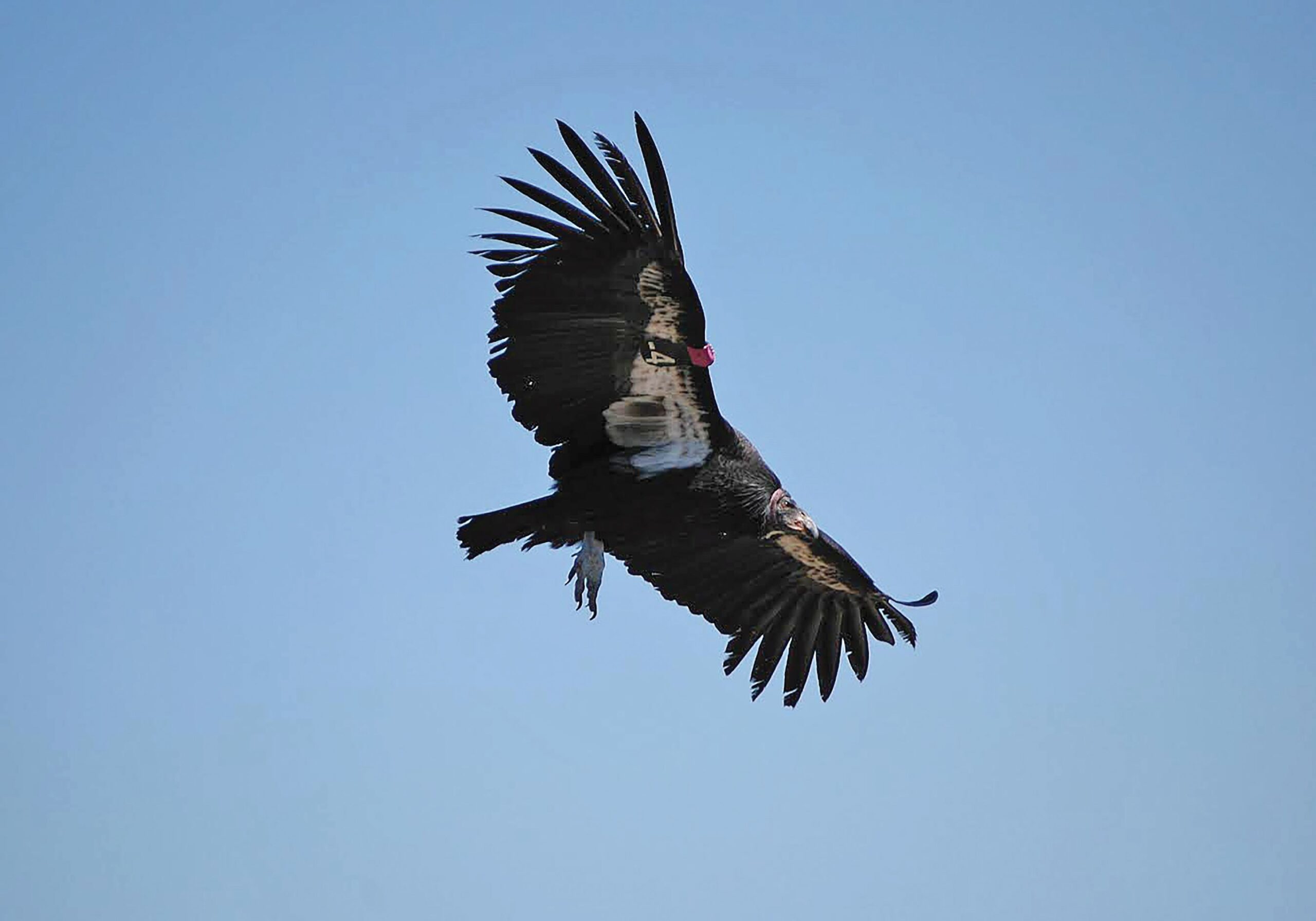California Condors Establish Home in the Grand Canyon
Story and photos by Cheryl Hartz

What a thrill to watch one of the most endangered species on earth soar over one of the Seven Wonders of the World! Nearly 100 California condors, with their 9.5-foot wing spans, now effortlessly ride thermal air currents above Arizona’s Grand Canyon.
Turkey vultures, with a wing span about half that, and even smaller ravens, hang out with the country’s largest birds, comically looking like condor wannabes.
Listed as endangered in 1967 by the federal government under the Endangered Species Preservation Act of 1966, condors earned their own recovery program from U.S. Fish and Wildlife in 1979. The species once ranged from California to Florida and on the Pacific Coast from Mexico to Canada. But by 1982, only 22 condors survived in the wild worldwide and were facing extinction. All wild condors were captured by 1987 and public and private partners established captive breeding programs to save the species.
Condors began being released in the wild in 1992 in California and in 1996 at the Vermilion Cliffs National Monument on the Grand Canyon’s north side in Arizona. The first wild born chick hatched in 2004.
Now about 560 condors survive, with more than half in free flying populations in California, Arizona/Utah and Baja Mexico, with the rest in captive breeding programs.
On September 28, National Public Lands Day, four 1.5-year-old condors gained their freedom at the Vermilion Cliffs – the 28th time condors were released there. In 2023, a devastating Avian influenza caused the deaths of 21 condors (a fifth of the population) and none were released last year. But Peregrine Fund biologists saved the egg of a sick wild father and a mother who perished from the flu, rushed the egg to the Liberty Wildlife Rehabilitation Center in Phoenix, and released Milagra, the healthy female chick raised by foster condor parents at the Fund’s World Center for Birds of Prey in Idaho. Amazingly, she enjoyed her first meal in the wild with her recovered dad.
The flu was bad, but lead poisoning is the biggest killer of wild condors. Condors are carrion feeders, they don’t kill their own food. When hunters use lead-based shot and condors eat carcass remains, the condors ingest lead and die. Many hunters have switched to lead-free shot and that has helped reduce fatalities. Garbage is another killer. When people pick up their trash, all wildlife is much safer.
Condors have bald heads so their food doesn’t get stuck in feathers. When they need to get their heads warm, they can raise feathers from around their necks over their heads, rather like a hoodie for humans.
They lay eggs on cliffs, in caves and in large trees, but don’t actually build nests. An adult pair mates at 6 to 8 years of age, and produces a single chick only every other year. That’s why it’s difficult to grow wild populations.
Thankfully, humans continue efforts to save this magnificent bird.
